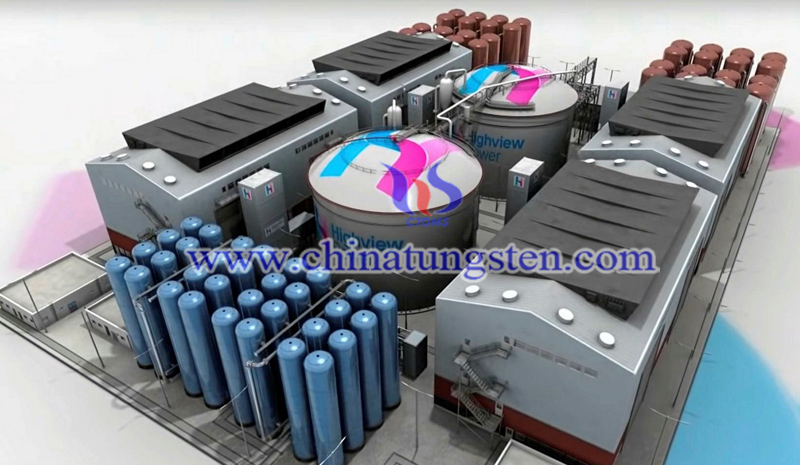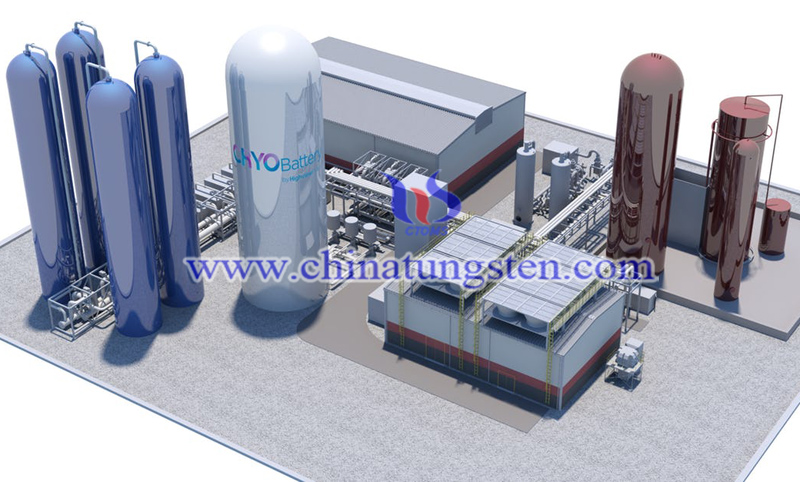US LAES May Compete with Lithium-Ion Battery Energy Storage
- Details
- Category: Tungsten's News
- Published on Friday, 03 January 2020 23:19
The first liquid-air energy storage (LAES) plant in the US is expected to compete with lithium-ion battery energy storage and gain a foothold in the energy storage market.
To address regional energy transmission issues, the US plans to build the first long-term energy storage system in the state of Vermont based entirely on liquid air technology. The proposed project, at least 50 MW in size, will provide more than 8 hours of energy storage, help integrate renewable energy into the grid, and ensure reliability under storms and other threats.

In recent years, lithium-ion batteries have dominated the emerging energy storage market, but with the increase in demand for long-term energy storage, other competitive technologies are also developing. As with any new technology, LAES owns a certain competitive relationship with lithium-ion battery energy storage.
Liquid air energy storage refers to a technology that cleaning and compressing air with excess or off-peak electricity, liquefying the air, and storing it in cold insulated containers. During the peak period of grid power consumption, the air in the container is heated, then expands and drives the turbine, so the energy generated can be used during peak periods of electricity generation without sunlight and wind energy.
There are two companies help implement this technology: Highview Power Storage and Encore RenewableEnergy. Highview Power Storage already holds two liquid air facilities in the UK, but the Vermont project is its first such project in the US and is one of about eight liquid air storage projects Encore Renewable Energy plans to build in the United States.
One of the largest benefits of this technology is that the system could be installed anywhere, unlike pumped storage that requires nearby water sources, or other energy storage technologies that require deep-hole compressed air. Some people believe that the main competitor of this technology is lithium-ion battery energy storage, and the advantages of liquid air energy storage are longer battery life, overall cheaper technology, and less space required. It is generally believed that lithium-ion batteries are used for 4 hours of energy storage, and it can also run for 8 hours, but it requires a certain price to double the energy stored in a system.

It is understood that New England has been facing power transmission problems, and liquid air energy storage projects may ease this situation. This technology can reduce the need to build more transmission lines. The energy storage system can also be placed close to the load center and discharged into the grid when needed, saving a lot of money on transmission.
Given that Highview Power Storage already operates liquid air storage facilities in Europe, the company's performance is better than market expectations, which will have some impact on the company and the technology in the market. Besides, many alternative energy storage technologies are developing at a certain rate, and maybe 10 years later, the market will change significantly, the LAES facility built in the US is a big step to the energy storage technology and it would be a huge competitor of the lithium-ion battery energy storage.
- Tungsten Manufacturer & Supplier, Chinatungsten Online: www.chinatungsten.com
- Tungsten News & Prices of China Tungsten Industry Association: www.ctia.com.cn
- Molybdenum News & Price: news.molybdenum.com.cn
- Tel.: 86 592 5129696; Fax: 86 592 5129797; Email: sales@chinatungsten.com



 sales@chinatungsten.com
sales@chinatungsten.com